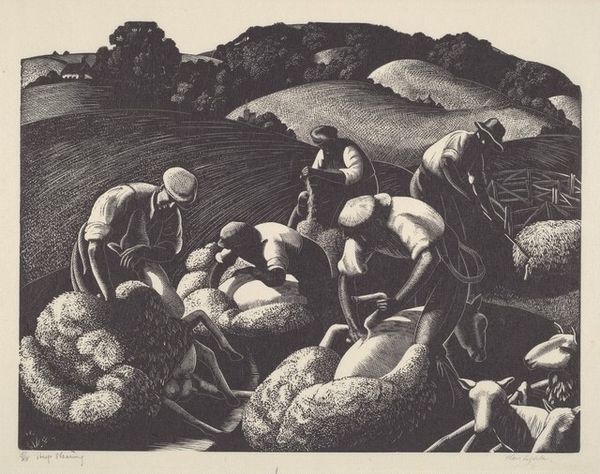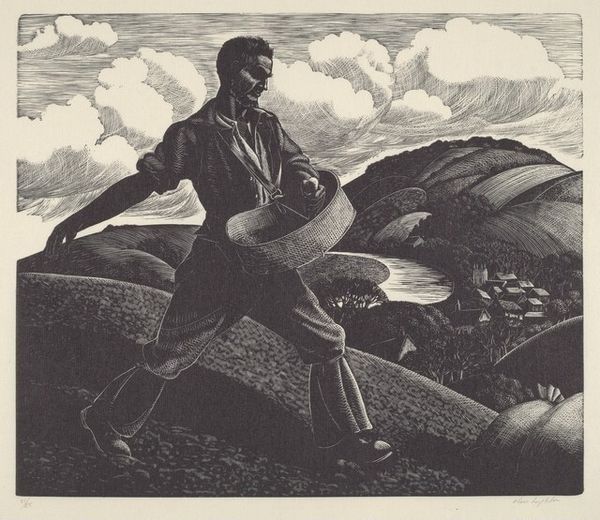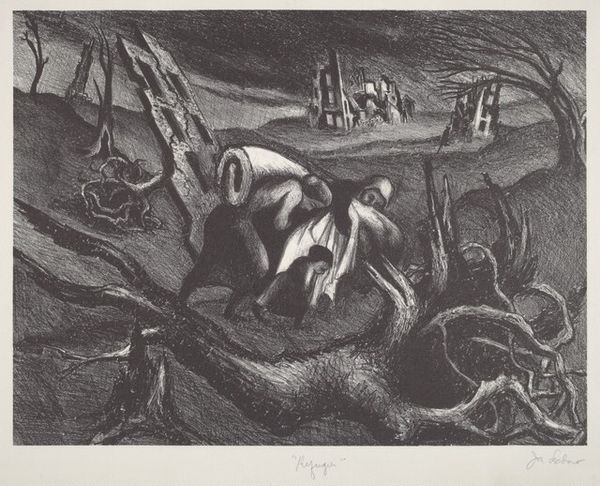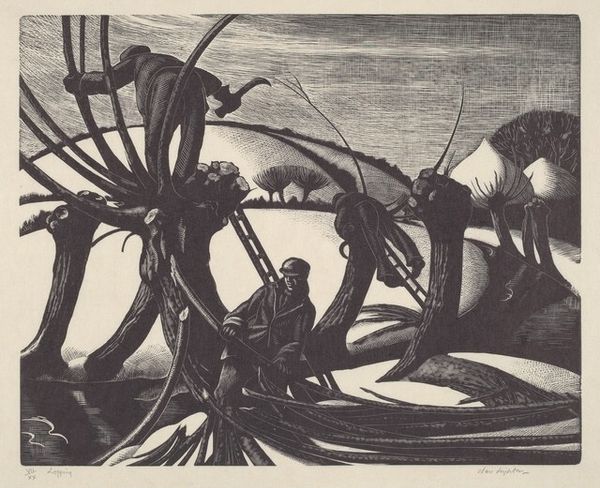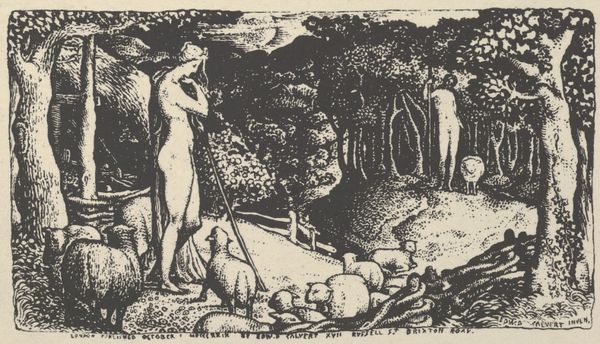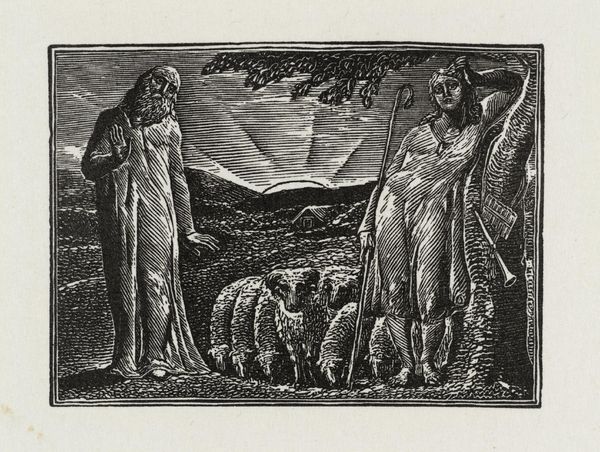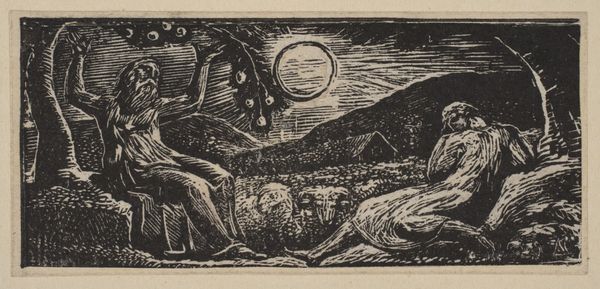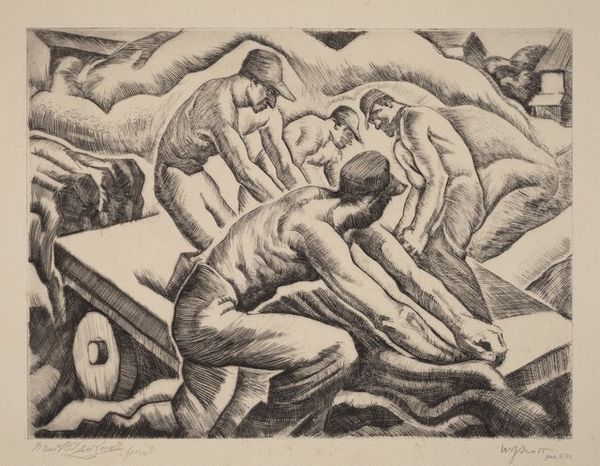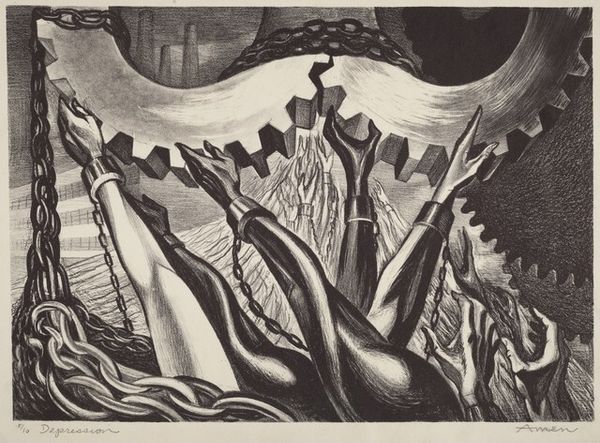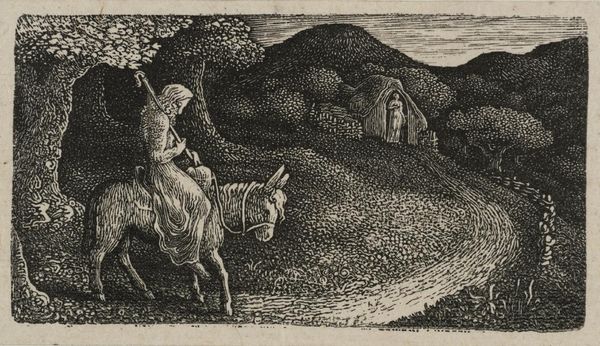
print, woodcut
# print
#
landscape
#
woodcut
#
modernism
#
realism
Dimensions: image: 20.3 × 27 cm (8 × 10 5/8 in.) sheet: 28.6 × 37.8 cm (11 1/4 × 14 7/8 in.)
Copyright: National Gallery of Art: CC0 1.0
Editor: Here we have Clare Leighton's 1932 woodcut, "Stooking." The sharp contrast and angular forms give it a powerful, almost brutal feel, despite depicting such a traditional rural scene. What stands out to you about it? Curator: Well, focusing on the process, this is a woodcut, a relief printmaking technique, where the artist carves away the negative space. Consider the sheer labor involved in creating those precise lines to depict the fields, the figures...it speaks volumes about the artist's commitment to portraying labor. Editor: I see what you mean! It almost makes the viewer aware of the work *behind* the work in the scene depicted. Curator: Precisely. And "Stooking" itself, the act of arranging harvested wheat into those distinctive cone shapes, becomes a commentary on human interaction with materials and resources. This is not just a pretty picture; it shows how communities organized work. Editor: It almost feels like Leighton is drawing our attention to the materiality of the whole farming process itself. It isn't an idyllic landscape; it is a document of a particular means of production. Curator: Absolutely. Also think about where it might have been seen – was it intended for an art gallery, or for broader circulation to challenge our assumptions about the distinction between craft, production, and art? Editor: So, examining the materiality helps us look beyond the pastoral scene, encouraging consideration of labor, context, and class. Fascinating. Curator: Exactly, by understanding the production, distribution and reception of Leighton’s work, we can better interpret it within its social and economic framework.
Comments
No comments
Be the first to comment and join the conversation on the ultimate creative platform.
